Blog
Swimming Down the Bamboo Road: Cycling In Southeast Asia
Jill Cohen is the Medic on the 2022 Bamboo Road. She shares this blog about the poetry and chaos of traffic in Southeast Asia.
There’s a certain poetry to the chaotic weave of traffic in Southeast Asia. Streets are packed with scooters, cars, trucks, trailers, motorcycles, buses, tuk-tuks, and bicycles moving in all directions, without any appreciable gaps between them. Horns honk and engines rumble loudly. Sometimes there are crosswalks, definitive lanes, signs, and traffic lights, but they seem to function as mere suggestions. And pedestrians amble amongst this lawless mix with a casual and nonchalant indifference that’s positively mystifying. That’s the chaos.
At first it’s hard for anyone with Western sensibilities to believe that any of it works, and at times of course it doesn’t. Accidents and collisions happen. But millions of vehicles and people go unscathed from point A to point B in Southeast Asia every day, because there actually is an order and a system and a set of rules in play that keep those in transit flowing along harmoniously and safely. That’s the poetry.
All of this was unfamiliar, though, when the 2022 TDA Bamboo Road riders landed in Vietnam two months ago to begin their tour. At that time, riding a bicycle across Southeast Asia in what appeared to be a disorderly mess was a daunting proposition. However, with open minds, keen observation skills, and courage, riders quickly caught on to the rules of the road for navigating and surviving Southeast Asian traffic. Here’s what’s been gleaned so far:
1. Make no sudden moves or sharp direction changes.
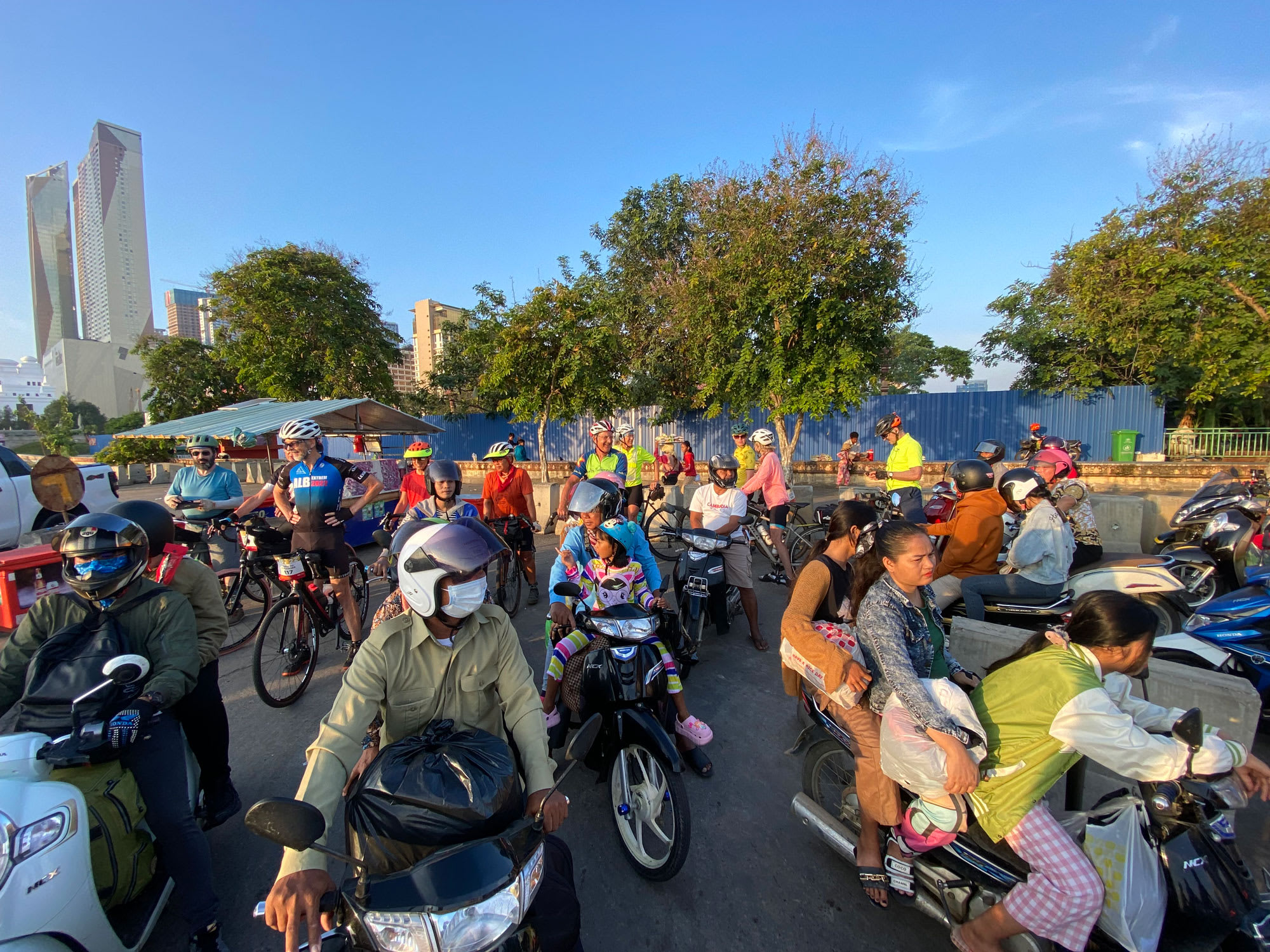
Riders lined up amongst the scooters in Phnom Penh, Cambodia
Your comrades in traffic have their eye on your trajectory, and they are counting on you to continue it steadily. So, do just that. Enter the mix gradually but confidently, and keep going in a predictable fashion. This way, others can plot their pace and their move to pass you, go around you, or allow you to turn in front of them.
2. Allow others to turn in front of you as well.
It’s not up to those entering your lane to look and see if it’s okay to proceed. When you see someone coming, it’s up to you to slow down and welcome them onto the road. Right of way? Not a thing here. Everyone takes turns.
>>Related Post: Cycling In India
3. Speaking of turns…
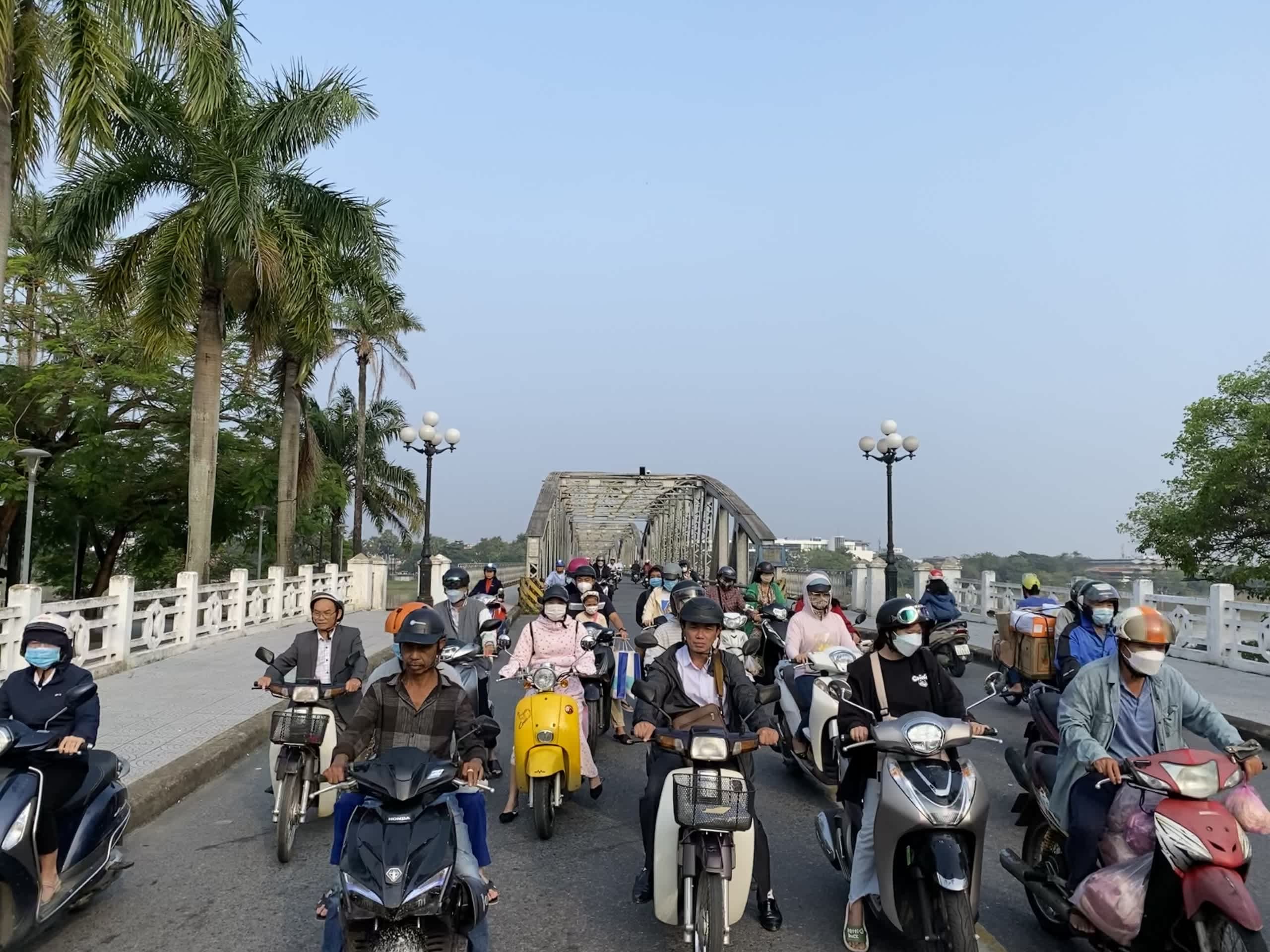
Scooters raring to go in Hue, Vietnam
Those who need to turn onto the opposite side of the road will often do the “lane-borrow.” This move is a little bit scary. It looks as though a vehicle is heading straight for you, and that’s because it is. But it’s temporary. Drivers just borrow the oncoming lane for a moment until they can get across. Your job in this situation is to slow down and give them space to do it.
4. A horn honk is not necessarily a bad thing.
Many trucks and buses will give cyclists a little “meep-beep” as a friendly warning that they’re about to pass. It doesn’t mean they’re mad. Rather it means, “Hi, I’m much bigger than you and don’t want to have an incident. Just making sure you know I’m here, and you stay over there while I zoom on by.”
5. If you need to pass someone or swing wide to avoid a pothole, communicate it to those around you.
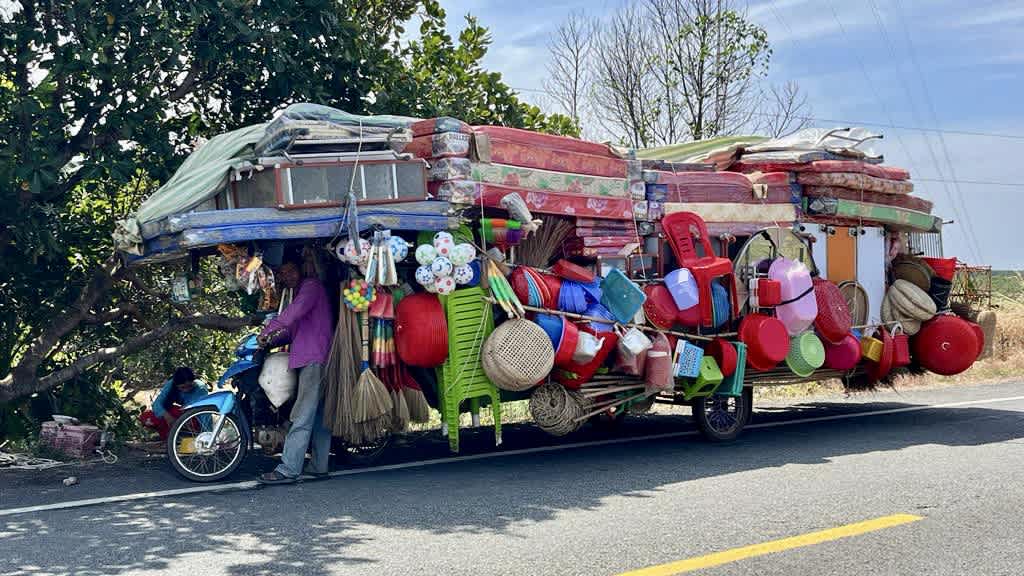
Store on a scooter in Cambodia
When on a quiet road, give your bell a little “ding ding!” The woman saddled with an entire restaurant on her slow-moving scooter will keep sputtering along on track, appreciative and glad to know you’re there. And when on a loud and busy road, give a big wave with your arm if you change course. The wave doesn’t have to convey any specific message. The extra visible motion just serves as a cue that you exist, and nearby drivers should factor in that a slightly different move is forthcoming. A few pedestrians in Vietnam even cross the road with one arm straight up in the air, which acts as an uncanny protective force field. Traffic notices and swims around them.
6. Think of the traffic as an ocean and you’re a snorkeler swimming through the coral reef.
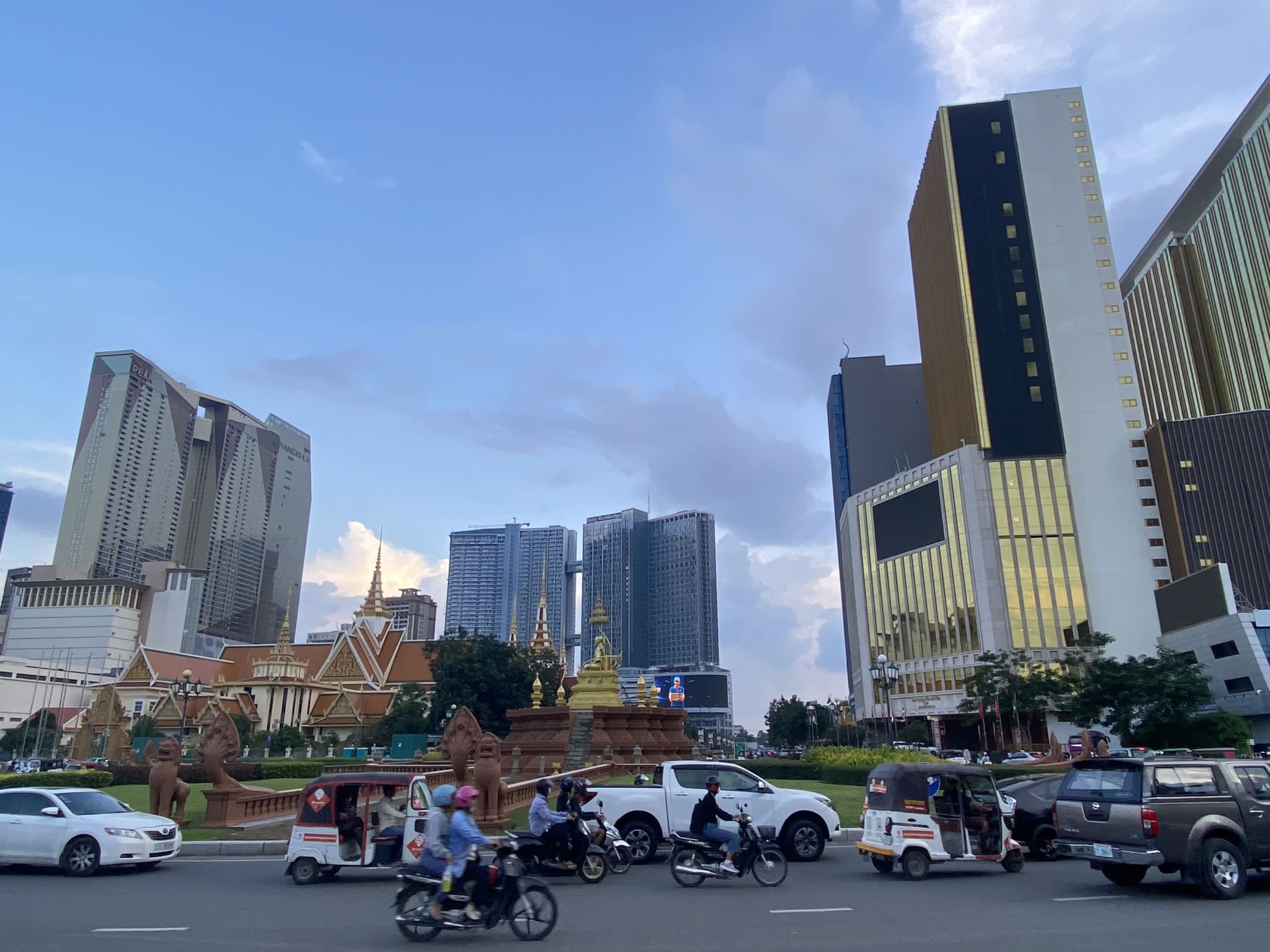
The mix of cars, trucks, tuk-tuks and scooters in Phnom Penh, Cambodia
There are schools of fish, giant creatures, and little zippy things in motion everywhere, but when was the last time you collided with a fish? If you dive in and swim nicely, they will all flow around you.
As tour has progressed, the Bamboo Road riders have not only learned to navigate and survive traffic in Southeast Asia, but also appreciate, embrace, and enjoy it. They’ve expressed surprise and delight in adapting to streets that feel more participatory and courteous than those back home, however initially baffling. Traffic only felt uncomfortable until they took some time to understand it and become part of the flow. Happily, it’s been more poetry than chaos ever since.
RELATED
TOUR

Bamboo Road
Many of us have criss-crossed the countries of South-East Asia on a ‘shoestring’ over the years, returning home with fond memories. Now we invite...
 REGISTER NOW
REGISTER NOW



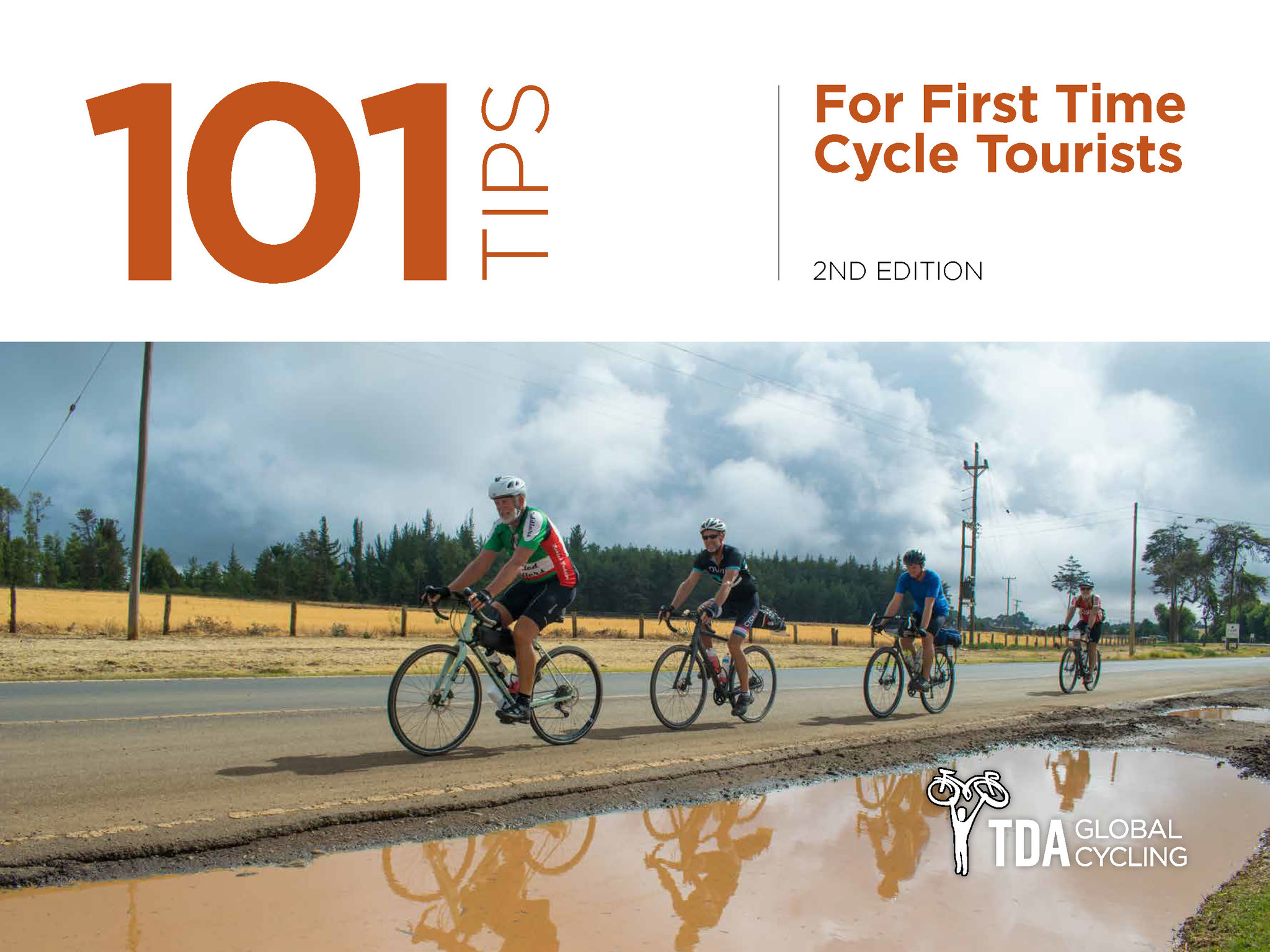
1 Comment for "Swimming Down the Bamboo Road: Cycling In Southeast Asia"
“When was the last time you collided with a fish?” Love it!